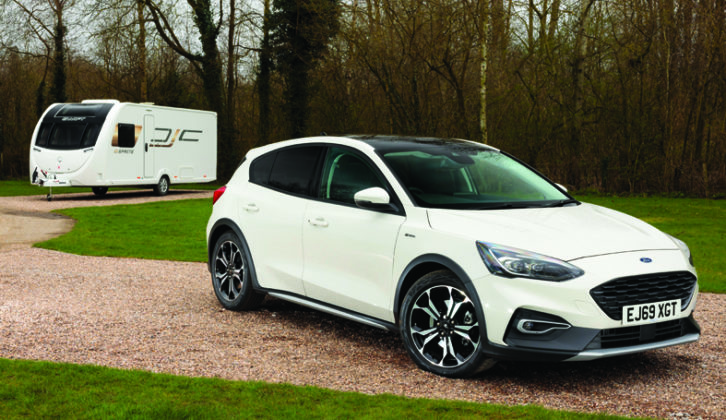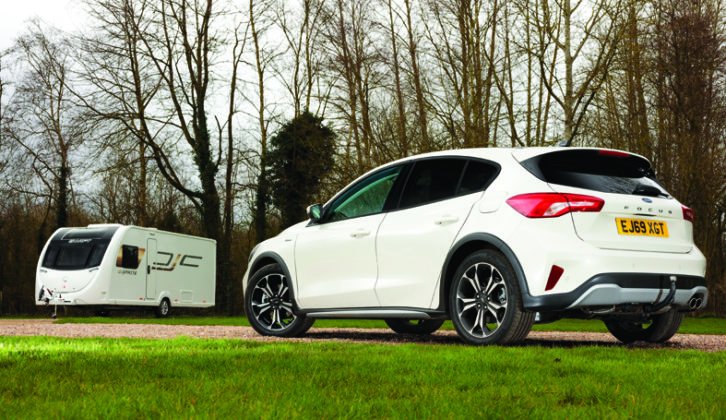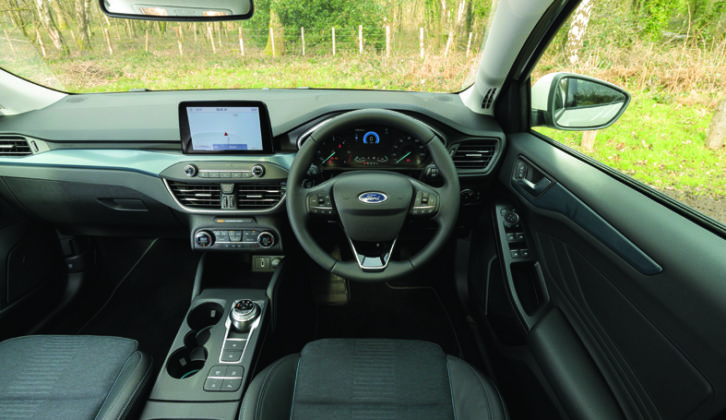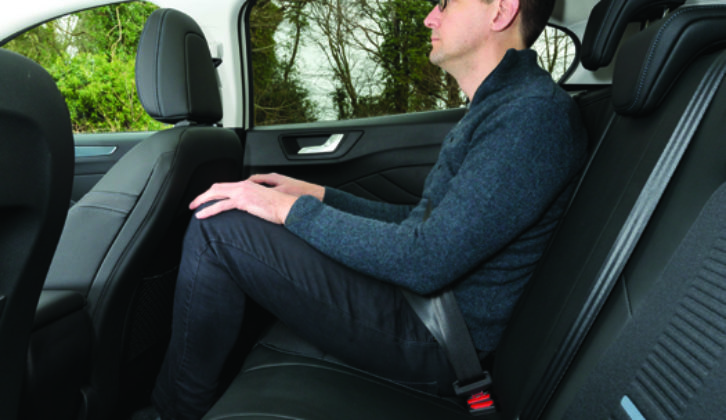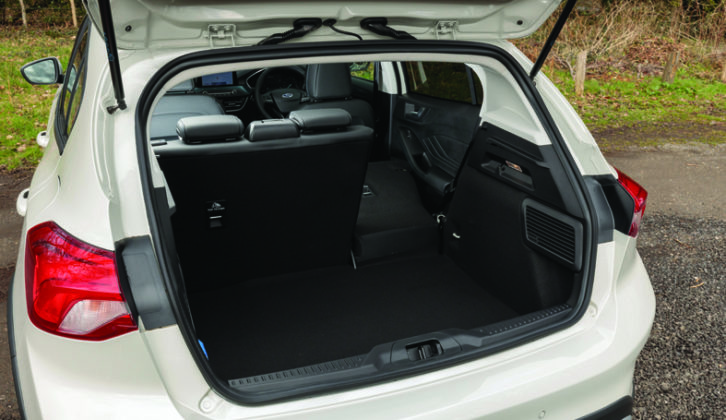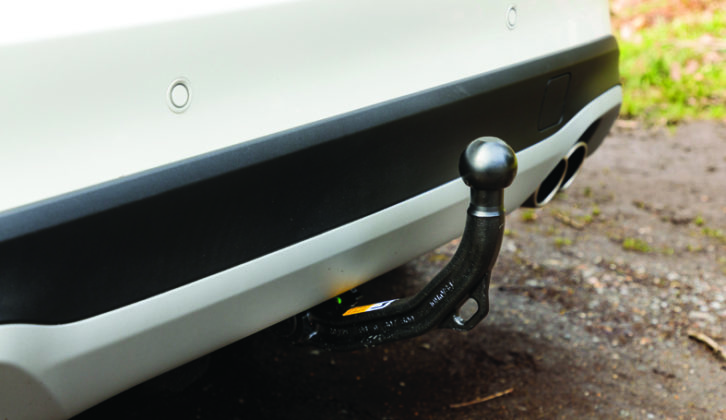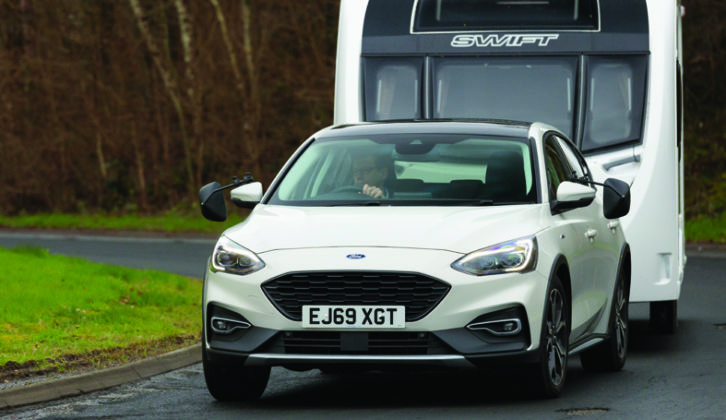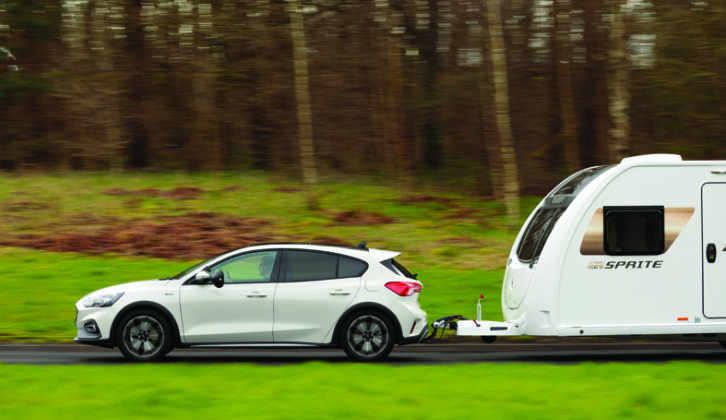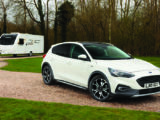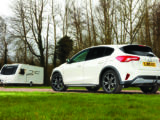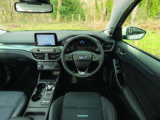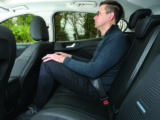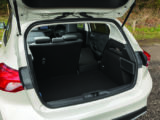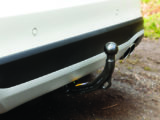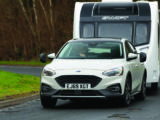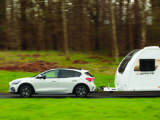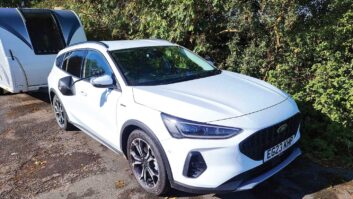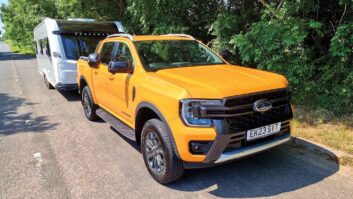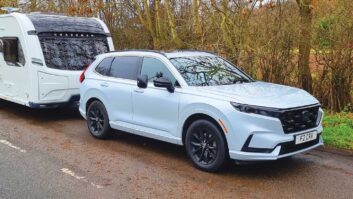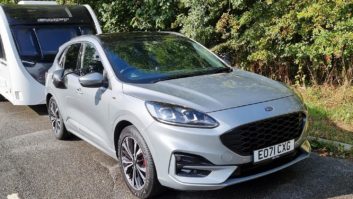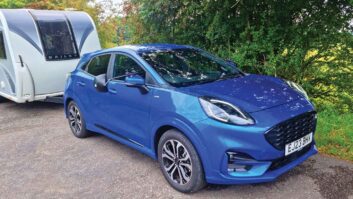Verdict
For the right buyer, the Focus Active makes sense. The SUV lookalike styling will attract, and comes without compromise in terms of driver appeal or running costs.
However, what some see as the disadvantages of a proper SUV will be advantages to others. The Focus Active is relatively light compared with a conventional SUV – good for fuel economy, but bad for car-to-caravan matching ratios. And it’s a shame there’s no 4×4 option, for the extra traction and weight of four-wheel drive.
As an everyday drive, the Focus Active is very good indeed. The ride and handling balance is extremely well judged, and keen drivers will enjoy every minute on a favourite B-road. The Ford is comfortable enough to keep passengers content, too.
As a tow car, the Focus Active deserves mixed notices. The engine pulls strongly and can easily cope with any suitable match. However, crosswinds pushed the Ford around more than we were expecting.
In hatchback form, the Focus Active is probably better suited to a couple than a family. It’s not that there isn’t enough room for more than one passenger, but rather that the boot is on the small side. If there’s more than two of you on tour, the estate has to be worth the extra.
As likeable as the Focus Active is, we’d be tempted to save our money and choose a more basic Zetec spec hatchback, with a few extras. Ford fans who really want an SUV might be better served by the new Kuga, which costs slightly more but is bigger and more practical.
Pros
None
Cons
None
If you like the looks of an SUV, but prefer the way a hatchback drives, Ford might just have the answer.
The Focus Active sits 30mm further from the ground than the hatch on which it’s based, and its beefed-up styling suggests outdoor adventure rather than the daily grind. The Active is available with a number of petrol and diesel engines, and there’s also an estate model. We’re testing the Active X 2.0 EcoBlue Start/Stop Auto.
What are we looking for?
As well as assessing the car’s towing ability, we want to find out if there’s a real benefit to choosing the Active, or it it’s all about the way the car looks.
The Focus Active's electronic parking brake held both car and caravan still on the 1-in-10 slope and released smoothly
Towing
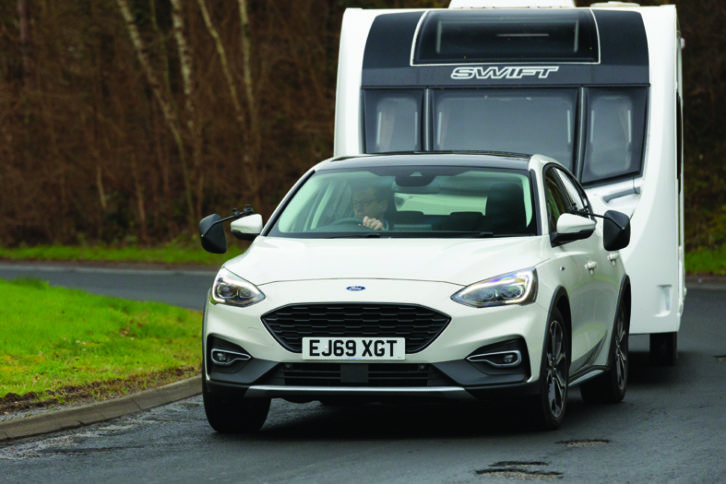
There are pros and cons to the Active’s halfway house approach. Although it sits higher than the regular hatchback, it’s lower than most crossovers and SUVs, which should keep the centre of gravity low, to the benefit of stability. However, there’s no 4×4 system to help if the going gets slippery.
Without the weight of four-wheel-drive, the Focus is relatively light. The 2.0 Ecoblue model has a kerbweight of 1518kg, which gives an 85% match figure of 1290kg. That’s well within the 1600kg towing limit. So a reasonable breadth of light tourers make sensible matches, but bear in mind that you can buy heavier cars for similar money. The Kia Sportage diesel weighs another 100kg or so, even in 2WD form.
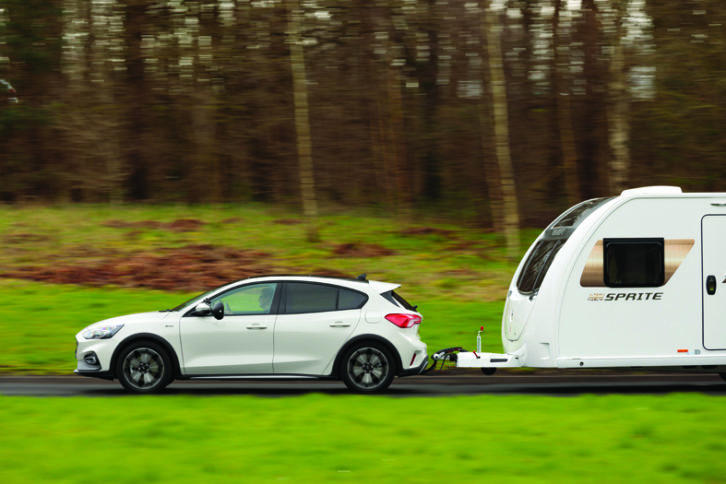
We matched the Ford to a Sprite Major 4 SB with a MiRO of 1286kg. With a healthy 273lb ft of torque, the diesel engine coped easily with the Sprite. It was simple to hold speed on hilly roads and to maintain 60mph while on the motorway.
In the main, the eight-speed automatic ‘box does a good job of keeping the engine on the boil. However, there’s no way to take charge of gear selection for yourself. We’d prefer to have the option of selecting a lower gear before overtaking, rather than waiting for the ‘box to kick down.
In damp weather, the Focus handled a hill start reasonably well. The electronic parking brake held car and van still on the 1-in-10 slope and released smoothly. However, avoiding wheelspin required a gentle right foot. The same proved true when pulling away briskly – the front of the car feels a bit light with a boot full of camera gear and the weight of a caravan on the towball.
On the motorway, the Focus tows well, so long as it’s not windy. We found the car susceptible to crosswinds.
In fairness, we were towing in some very blowy conditions, but we could feel the van tugging at the back of the car a lot. As soon as we drove directly towards or away from the wind, the car settled down and felt more at ease.
We’ve enjoyed towing with other versions of the Focus, and except for being pushed around by gusts of wind, the same is true of the Active.
Perhaps the slighter softer suspension of this model, compared with the ST-Line Estate that we tested last year, allows the caravan’s movements to affect the car more in these conditions.
Our other reservations are that you can buy heavier cars for similar money, and models like the Kia Sportage and Škoda Karoq offer four-wheel-drive versions when there’s no 4×4 model available in the Focus Active range.
But these criticisms aside, we found that the Focus Active towed well.
Everyday Driving
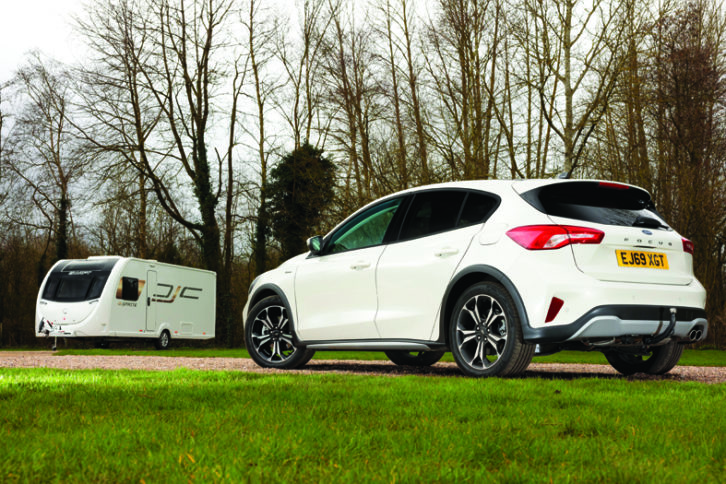
Leave the caravan on its pitch, and the Ford is a real pleasure to drive.
The standard Focus has a reputation for being one of the most appealing hatchbacks from the driver’s seat, and almost none of that engaging character has been lost by raising the car up by 3cm. The steering is spot-on – direct, accurate, well weighted. And the Active still feels taut and agile, cornering with little lean.
In fact, for everyday driving we think the Active’s suspension set-up is better than the sportier ST-Line’s. It’s more forgiving of poorly surfaced roads, and absorbs sharp potholes and other obstacles with less of a thump than the ST-Line.
It makes a comfortable motorway car, although less wind and road noise would be welcome on a long trip.
Whatever the situation, the engine performs well. It’s quiet unless revved hard, and with such a strong response in the middle of the rev range, there’s rarely any need to go near the redline.
Aside from the occasional clunky shift at low speed, the auto gearbox performs well. But as when towing, we missed the option of changing gear for ourselves.
To give the Active a little more off-road ability than the standard car, the Drive Mode system has ‘slippery’ and ‘trail’ setting, to help the car find as much grip as possible in bad weather or when you’re heading off Tarmac. However, clever traction control can’t match the performance of proper four-wheel drive when the going really gets tough.
Space
If you travel in the front of the Focus, there’s plenty of space, although the panoramic sunroof fitted to the Active X does eat into the headroom slightly.
There’s six-way powered adjustment for the driver’s seat, together with height and lumbar adjustment for the passenger seat. However, it’s worth noting that the seating position isn’t as high as you’d find in most SUVs. You sit relatively low to the floor, just as you do in the standard Focus.
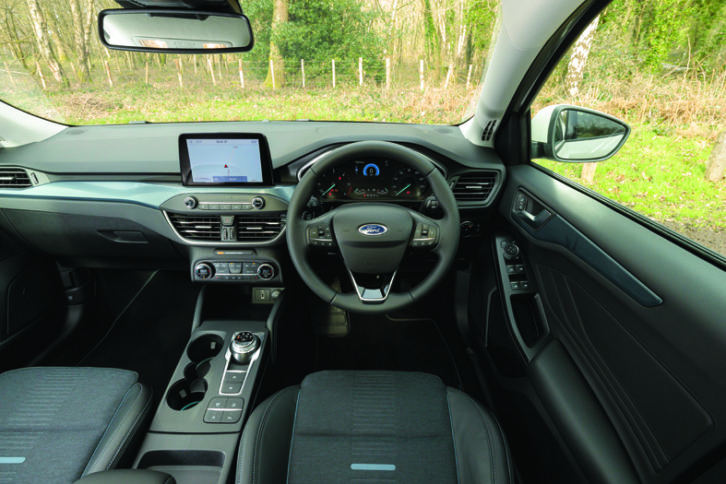
The dashboard looks neat and modern, and we’re pleased to see that Ford has kept the air-con controls separate from the Sync 3 touchscreen.
However, the plastics on the lower dash and doors are hard and cheap-looking.
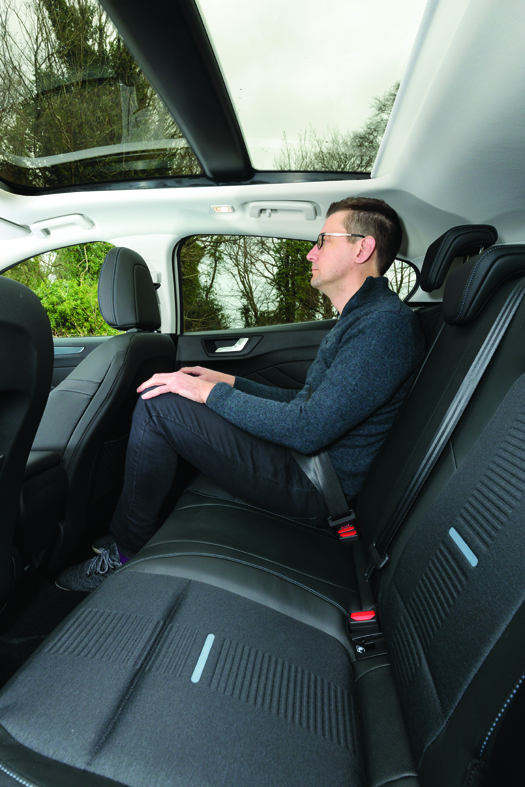
Move to the back of the car and there’s good legroom, but headroom is in short supply. We’re also disappointed that there are no face-level air vents to keep rear-seat passengers at a comfortable temperature.
But a bigger concern is the Focus’s boot. At 341 litres, the capacity is modest by hatchback standards, and poor compared with the proper SUVs the Active competes with. A Kia Sportage has 491 litres for bags.

There’s a high lip to lift items over, which makes loading up awkward if you have a bad back. And with the back seats folded, there’s a pronounced step to the floor, which is an irritation when loading long items.
Unless you are happy to be travelling light, the solution is to choose the estate version of the Focus Active, which offers much more luggage space.
Running Costs
The Focus Active range starts from £22,895. That amount will buy you a 1.0-litre 125PS EcoBoost manual.
Our diesel auto in X spec, which is better equipped than the regular Active, costs £28,495. If you want the estate version, you’ll pay £1200 more.
What Car?‘s research suggests it should be possible to save around £2000 from the asking price with the help of a little gentle persuasion.
Standard kit on the Focus Active includes the panoramic sunroof, keyless entry, front and rear parking sensors, dual-zone climate control, satellite navigation, a DAB radio, heated seats, a heated windscreen and a space-saver spare wheel.
The safety tech includes autonomous emergency braking. Tested by the safety experts at Euro NCAP, the Focus scored the maximum five stars.
Fuel economy is very good, with an official combined figure of 61.4-62.8mpg. We saw high 50s in solo driving, and 30.9mpg while towing. Such economy is one clear advantage to choosing the Active over a heavier SUV.
The Focus should also be affordable to insure, sitting in insurance group 18E.
If you were to decide to sell the car on after three years and 36,000 miles, our colleagues at What Car? predict that it would be worth some 42% of the original purchase price.
However, a number of the Focus Active’s SUV rivals would do better than that.
If you liked this…READ THESE:
If you’ve enjoyed reading this article, why not get the latest news, reviews and features delivered direct to your door or inbox every month. Take advantage of our brilliant Practical Caravan magazine SUBSCRIBERS’ OFFER and SIGN UP TO OUR NEWSLETTER for regular weekly updates on all things caravan related.
Technical Specifications
| Engine Size | 1996 cc |
| Kerbweight | 1518 kg |
| 85% KW | 1290 kg |
| Towball Limit | 90 kg |
| Maximum Towing Limit | 1600 kg |
| Power | 148 bhp |
| Torque | 273 lb ft |
| Offical MPG | 61.4-62.8 mpg |
| Towing MPG | 30.9 mpg |
| CO₂ | 110 g/km |
